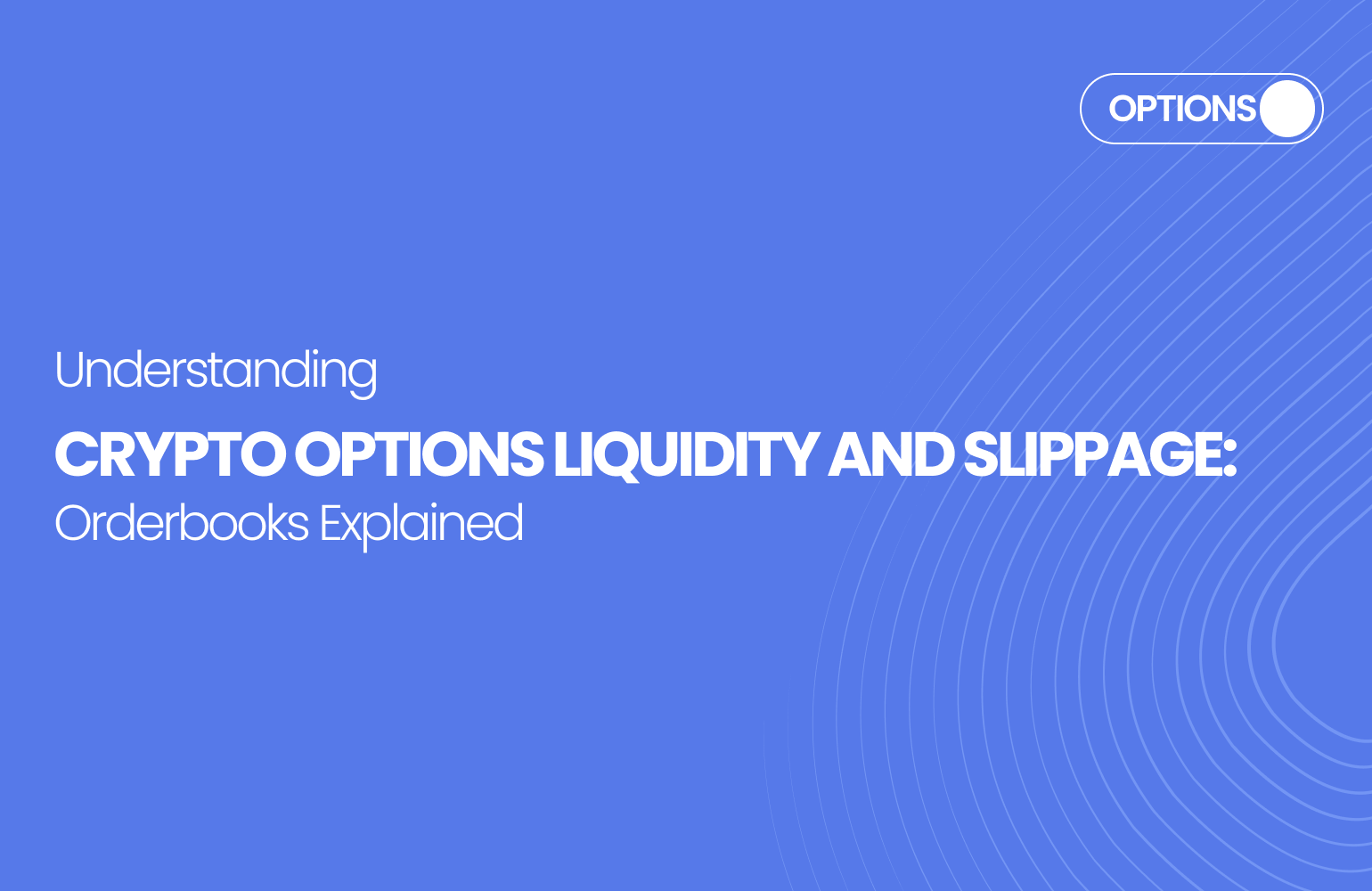Key Takeaways
- Favour liquid contracts with high OI and narrow spreads
- Avoid market orders in thin books
- Use Pi42’s tools to visualise crypto options orderbook and reduce slippage
You’ve chosen the right strike, expiry, and even timed the market perfectly—but your trade still performs poorly. Why? The answer often lies in options slippage and options liquidity in crypto.
In this article, we’ll decode what is an orderbook in options, bid-ask spreads, and market depth—the invisible forces that shape every crypto options trade you place.
What Is Liquidity in Options Trading?
What is liquidity in options? It refers to how easily you can enter or exit a trade without significantly impacting the price. Traders often evaluate liquidity of options before committing capital, since low depth can increase costs.
High vs. Low Liquidity
- High Liquidity: Tight spreads, faster execution, minimal slippage
- Low Liquidity: Wide spreads, delays in order fills, higher slippage
Why Liquidity Matters in Crypto Options
Unlike spot or futures markets, options liquidity is thinner in crypto. This amplifies execution risk, especially for exotic strikes and expiries.
How to Spot Liquid Options
- High Open Interest (OI)
- Tight Bid-Ask Spreads
- Depth in the options orderbook
Slippage: The Hidden Cost of Low Liquidity
What Is Slippage in Crypto Options?
What does slippage mean in crypto? Slippage is the difference between your expected price and the actual fill price of your order.
Types of Slippage in Options
- Positive Slippage: Order filled at a better price than expected
- Negative Slippage: Order filled worse than expected
Why Slippage Happens
- Illiquid markets with low orderbook depth
- Sudden price spikes
- Large market orders in thin books
Examples in Options Trading
- Buying a BTC call option at $400 ask, but getting filled at $420
- Selling a SOL put with a bid of $50, but getting executed at $45
How to Reduce Slippage in Crypto
- Use limit orders, not market orders
- Trade during high-volume hours
- Choose strikes and expiries with good open interest
Understanding the Options Orderbook
What Is an Orderbook in Trading?
An orderbook in crypto displays active buy and sell orders at different price levels for each option.
Key Terms
- Bid: Highest price a buyer is willing to pay
- Ask: Lowest price a seller is willing to accept
- Spread: Difference between bid and ask
- Depth: Quantity available at each level
Reading the Orderbook on Pi42
- View live bids and asks for BTC, ETH, and SOL options
- Colored heatmaps to indicate volume concentration
- Depth charts for visual liquidity
Strategic Use
Place limit orders near strong support in the book. Anticipate price movement based on shifting bid/ask dynamics.
Liquidity and Market Impact: Challenges with Large Trades
Why Market Impact Matters
Large trades in low liquidity options can distort the market, leading to worse execution.
Example: Placing a 100-lot BTC call buy at once widens the ask dramatically.
Solutions
- Break orders into smaller chunks
- Use TWAP (Time-Weighted Average Price) algorithms
- Monitor implied volatility shifts post-trade
Tools on Pi42
- Slippage warnings before execution
- Orderbook replay mode to analyze liquidity post-trade
Best Practices for Trading Illiquid Options
- Check the Greeks & Open Interest
Low OI = execution delays. High Vega/Gamma = unstable pricing. - Trade Around Market Events
Liquidity spikes during CPI, Fed, or BTC halving events. - Use Limit Orders With Buffer
Add a 1–2% tolerance to avoid overpaying. - Avoid Far OTM or Short-Dated Contracts
These often lack crypto options liquidity unless volatility is high.
Conclusion
In crypto options trading, options slippage and options liquidity are mission-critical factors. Even with the right strategy, ignoring crypto options liquidity and slippage can turn a winning setup into a losing trade. Mastering execution is just as important as picking the right strike or expiry.
👉 Start trading on Pi42 with visibility, control, and the liquidity insights you need to win in the options game.
Expand Your Knowledge:
Volatility Trading: Trading With Implied Volatility Options
What are Call and Put Options in Crypto
When to Trade Options in Crypto and Why They’re Useful
What is Options Expiry Dates in Crypto: Explained with Examples

